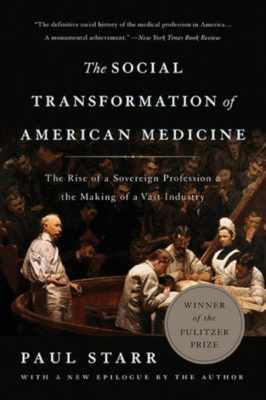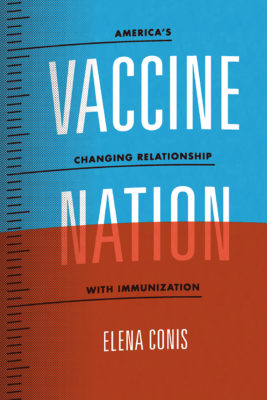In the course of thinking about the history of medical ideas, one figure from my prior work on the history of education has reappeared. His work, Deschooling Society (1971), is something of a standard in education foundations textbooks. About the problems of institutional schooling and the virtues of individualized education, the book and its author were easy to box up, intellectually, as products of their times. The notion of ‘deschooling’ made sense in relation to the long 1960s—in an era of Peoples Colleges, dropping out, countercultures, and anti-Establishment discourse. It was natural for someone, anyone, to call for de-institutionalizing education. For instance, Tom Hayden and the authors of the Port Huron Statement asserted that twentieth-century K-12 education had produced, for colleges, a bunch of passive, status-conscious, apathetic, go-along-get-along types. And if the reason, according Port Huron thinkers, was a “cumbersome academic bureaucracy,” then why not reduce or eliminate schooling establishments at all levels? In sum, unless I was going to explore the history of homeschooling (which is interesting), or unless I was a libertarian calling for radical free-market thinking in education, I could let Deschooling remain a footnote, or a 1960s curiosity, in my work, at the time, on the history of the great books idea.
 Ivan Illich, then remained a historical curiosity for me until around a year ago. I re-encountered Illich in the context of rereading and teaching Paul Starr’s The Social Transformation of American Medicine (1982, 2017 second edition). Starr only talks about Illich and his 1976 work, Medical Nemesis, in a few paragraphs.[1] But those paragraphs, and Illich’s name, resonated in a way they never had before. What had changed?
Ivan Illich, then remained a historical curiosity for me until around a year ago. I re-encountered Illich in the context of rereading and teaching Paul Starr’s The Social Transformation of American Medicine (1982, 2017 second edition). Starr only talks about Illich and his 1976 work, Medical Nemesis, in a few paragraphs.[1] But those paragraphs, and Illich’s name, resonated in a way they never had before. What had changed?
Since 2013-14, when I finished my book on the great books idea and refocused my academic staff career on medical education, I have added one specialty area to my portfolio, and expanded another. The latter, the expansion, has been anti-intellectualism. That work had began with the study of the great books idea. I felt that no study of that idea could proceed without acknowledging its work, in a democracy, of promoting the liberal arts and humanism for adults while also fighting anti-intellectualism. While it was a minor theme in The Dream of a Democratic Culture, I’ve dived deeper since to think about the viability and failings of the notion of anti-intellectualism, broadly considered, as a long-running and intimately connected problem in relation to democratic capitalism. This necessitated a deep dive into Richard Hofstadter’s work—his assumptions, motivations, politics, historical work, and occasional weaknesses.
Coupled with my work on anti-intellectualism, I gradually added the history of medicine to my specialty portfolio. This began, unexpectedly, in 2007. At the time I was advising pre-health professions students, at Loyola Chicago. I noticed their interest in the history of medicine, but also their lack of an outlet for exploration of the topic. I consulted with Jo N. Hays, an emeritus Loyola faculty member and long-time AAHM member who had published on the history of disease, and created a basic survey of the history of medicine. That’s when I first encountered Paul Starr. My work on that undergraduate course later resurfaced when I was a student advisor and part-time faculty member at Loyola’s Stritch School of Medicine. There I taught individual electives to M3s and M4s on the history of medicine. That work eventually resulted in a strong interest in the anti-vaccination movement, and eventually a 2015 OAH conference paper on its post-1970s history. In that paper I had called for a larger, deeper study on the topic—without knowing about a germane new book published that very year, Elena Conis’ Vaccine Nation. In the paper I had also connected my work on Hofstadter and anti-intellectualism to the anti-vaccination movement.
 Since 2015 my work on these topics has grown dramatically, especially in the teaching arena. I’ve taught Hofstadter’s 1963 classic, Anti-Intellectualism in American Life, several times to Chicago audiences—adults at the Newberry Library and undergraduates in UIC’s Honors College. Just this spring I completed a term teaching Conis’ book to Honors students. I’ve also used Starr’s book in a Loyola undergraduate core course covering health, medicine, and science. I always bring anti-intellectualism into discussions of resistance to medical expertise. Changes discussed by Star and Conis, in post-1960s America, have links to a growing resistance to, or rejection of, Enlightenment rationalism, authority, “Establishment” institutions, and America’s technocracy.
Since 2015 my work on these topics has grown dramatically, especially in the teaching arena. I’ve taught Hofstadter’s 1963 classic, Anti-Intellectualism in American Life, several times to Chicago audiences—adults at the Newberry Library and undergraduates in UIC’s Honors College. Just this spring I completed a term teaching Conis’ book to Honors students. I’ve also used Starr’s book in a Loyola undergraduate core course covering health, medicine, and science. I always bring anti-intellectualism into discussions of resistance to medical expertise. Changes discussed by Star and Conis, in post-1960s America, have links to a growing resistance to, or rejection of, Enlightenment rationalism, authority, “Establishment” institutions, and America’s technocracy.
Returning to Ivan Illich, both Starr and Conis use Medical Nemesis to reinforce and situate several points about the medical profession as of the 1970s—its loss of authority, doubts about its effectiveness, and its misogyny.
Paul Starr does so in a section titled “The Generalization of Doubt,” wherein 1970s critics started asking “whether medical care made any difference in the overall health” of society. Starr argues this was a reappearance of nineteenth century idea “therapeutic nihilism.” Adherents of that negative idea, or that ‘structure of feeling’ (to invoke Raymond Williams), felt existing therapies and drugs, whether rationally administered or not, were utterly useless. This feeling derived, in part, from a social criticism of psychiatry’s work, and about institutions used as “instrument[s] of therapeutic oppression.” [2] Illich enters as a timely new critic with a text, Medical Nemesis, arguing, in Starr’s words, “that medical care caused more disease than it cured.” Continuing, “people would be healthier if they liberated themselves from dependence on the entire malignant apparatus of modern medicine.” Illich, moreover, used this criticism to add, somewhat perversely, that this fact made greater access to (already faulty and actively harmful) health “care” a needless endeavor. Starr directly noted, from Illich, that enabling access “would only equalize the delivery of professional illusions and torts” (meaning wrongful acts done willfully and negligently). [3] Structural flaws in the foundations of twentieth-century medicine enabled doubts about its practitioners, diagnoses, prescriptions, and therapeutics.
The key here lies in tort’s Latin roots, tortum and torquere, to twist. In Illich’s view the entire healthcare system, then, was contorted, now doing more harm than good. Medicine in the 1970s would, in the end, deliver ruin rather than flourishing. Illich had named the system as our nemesis. In so doing he echoed other then-recent voices: Hayden, SDSers, counterculture adherents, environmentalists, feminists, and advocates of racial justice.
Conis situates Illich’s Medical Nemesis alongside feminist criticisms of medicine that arose in the 1970s. In the tradition of Our Bodies Ourselves (1970-71), works like Gena Corea’s The Hidden Malpractice (1977) and Suzanne Arms’ Immaculate Deception (1975) all, in Conis’ words, “chastised organized medicine for its intimidation and mistreatment of women, especially mothers and mothers-to-be.” “The medical establishment,” Conis writes, “instilled a sense of powerlessness in women, subjecting them to overmedicalized procedures that harmed them and their babies.” [4] Enter Illich. Echoing Starr’s assessment, Conis notes that Illich “argued that factors other than ‘medical progress’—including water and sewage treatment, better nutrition, and sociopolitical equality—were primarily responsible for improvements in health.” Physicians and the medical profession, then, “did not deserve the live-saving reputation it was so universally and exclusively accorded.” And vaccination was not spared from Illich’s criticisms. Vaccination “as a medical intervention,” Conis continues on Illich, “had been dramatically overstated” in relation to social, economic, and public health improvements that were real cause of massive, decisive declines in diseases like diphtheria, whooping cough, measles. [5]
In wrapping up her discussion of Illich, Conis notes his influence on a well-known 1980s vaccination critic, Robert Mendelsohn. Two of Mendelsohn’s books, Male Practice (1981) and Confessions of a Medical Heretic (1979), either cited Illich or forwarded Illich-inspired ideas. Illich, then, fed the fires of anti-vaxxers. Or, in Conis’ words, reading these authors left one with the impression that “mass vaccination was both risky and…medical overkill.” [6]
Conis builds a story, using Illich, about legitimate (or at least understandable) doubts about vaccination policy and research, from the point of view of parents and critics. Starr uses Illich to further his negative story of a revolt against the authority of physicians, medical science, medical capitalism, and the medical establishment. But the result of the both is the same: they help explain how the late twentieth century saw the rise of an atmosphere of distrust—a lack of confidence in the general structure of the medical establishment.
The links between the anti-vaccination movement, medicine gone wrong, medical expertise, Ivan Illich, and anti-intellectualism (broadly considered) should now be clear. My intention, in future USIH blog entries, is to dive more deeply into Illich’s life and career, as well as into Medical Nemesis. – TL
——————————————–
Notes
[1] Illich’s book was first published in Autumn 1974, and then two subsequent editions appeared in 1975 and 1976. Scholars tend to use the 1976 version as the authoritative one. To make matters even more confusing, the book began as a lecture of the same name, which was published in The Lancet in May 1974. For more on this history, see S. O’Mahony, “Medical Nemesis 40 Years on: The Enduring Legacy of Ivan Illich,” Journal of the Royal College of Physicians of Edinburgh 46, no. 2 (2016): 134–39. https://doi.org/10.4997/JRCPE.2016.214.
[2] Paul Starr, The Social Transformation of American Medicine (New York: Basic Books, 1982), 408-409; Raymond Williams, Culture & Society: 1780-1950 (New York: Columbia University Press, 1958; 1983), xv, 39.
[3] Starr, 409, 410.
[4] Elena Conis, Vaccine Nation: America’s Changing Relationship with Immunization (Chicago: University of Chicago Press, 2015), 119.
[5] Conis, 119.
[6] Conis, 120.

0